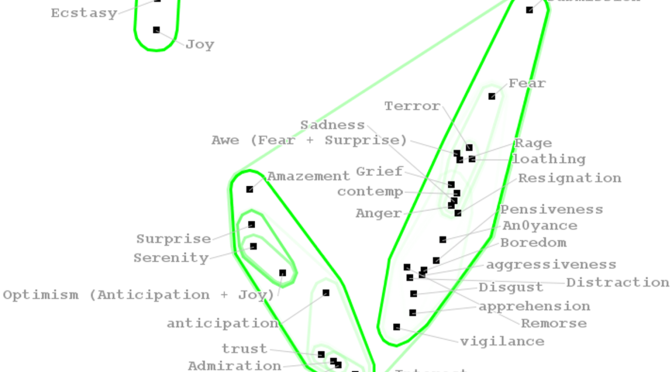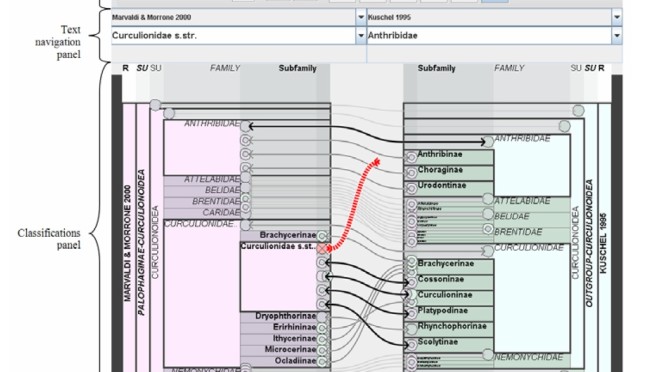Here we developed a novel information visualization technique that combines multidimensional scaling and hierarchical clustering to support the exploratory analysis of multidimensional data. The technique displays the results of multidimensional scaling using a scatter plot where the closeness of any two items’ representation’s are approximate to their similarity according to a Euclidean distance metric. The results of hierarchical clustering are overlaid onto this view by drawing smoothed outlines around each nested cluster. The difference in similarity between successive cluster combinations is used to colour code clusters and make stronger natural clusters more prominent in the display. When a cluster or group of items is selected, multidimensional scaling and hierarchical clustering are re-applied to a filtered subset of the data, and animation is used to smooth the transition between successive filtered views. As a case study we demonstrate the technique being used to analyse survey data relating to the appropriateness of different phrases to different emotionally charged situations.
Our results were presented with poster poster at VDA2013.
P. Craig and N. Roa-Seïler, “A combined multidimensional scaling and hierarchical clustering view for the exploratory analysis of multidimensional data,” pp. 86540T-86540T, 2013.
2013_VDA

